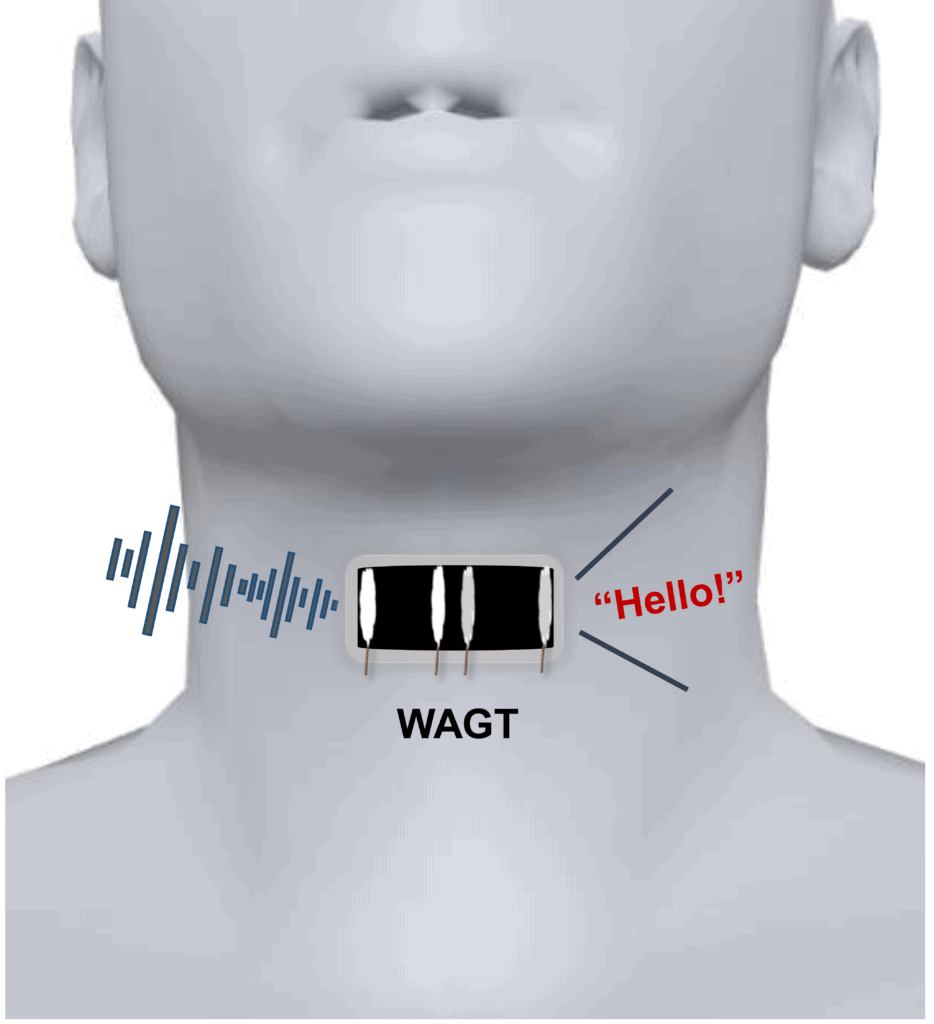Chinese researchers have developed a thin artificial ‘voice box’ that can be attached to the neck like a temporary tattoo. The wearable device is capable of converting slight movements of the skin into sounds. Someday, the researchers hope, a more advanced version might help mute people speak with relative ease.

We take speech for granted, but this seemingly effortless gesture is extremely fragile. About 8 in 10,000 people are born mute and many more suffer accidents or illnesses that can damage vocal cords, leading to speech impairments.
There are actually a surprising number of ways that speech can be robbed from us. There are disorders like stuttering and apraxia, which cause people to scramble syllables, as well as motor neuron diseases, which affect muscle control required to articulate. There are also brain injuries, stroke, multiple sclerosis, and even autism, which can cause speech impairments.
In the United States alone, there are over 2 million people who require digital “Adaptive alternative communication” (AAC) methods to help them communicate. For instance, the late Stephan Hawking used to employ a voice synthesizer that turns text into speech — the familiar robotic speech that eventually became one of Hawking’s trademark features.
Scientists are now working on more sophisticated voice-assisting technologies. For instance, a device that uses electrodes fitted in the human brain can detect and decipher neural signals — what a person means to say — transforming them into a digital signal which a voice synthesizer can utter.
Elsewhere, Chinese researcher at the Institute of Microelectronics & Beijing National Research Center for Information Science and Technology have developed prototypes that can measure the motions of human skin — such as a pulse or heartbeat — into other forms of energy, such as sounds.
Previously, one such prototype that converted skin motions into sound had to be taped to the skin and wasn’t comfortable enough to wear for long periods of time. Now, a new version which was recently described in ACS Nano is so thin that the device can be attached to the neck like a temporary tattoo, using just water.
The artificial voice box is comprised of a laser-scribed graphene on a thin sheet of polyvinyl alcohol film. It measures only 0.6 by 1.2 inches (1.5 to 3 cm), or roughly twice the size of a thumbnail.
To demonstrate the device, the researchers attached the film to volunteer’s throat which was connected to a small armband equipped with a circuit board, microcomputer, power amplifier, and decoder. When the volunteer imitated the motions of speech without actually pushing air to produce sounds, the device was able to convert these movements into sounds. For now, these are simple words like “OK” or “No” but the researchers say that, in the future, people with speech impairments could use a similar device to generate speech with their throats, just like any other person.



